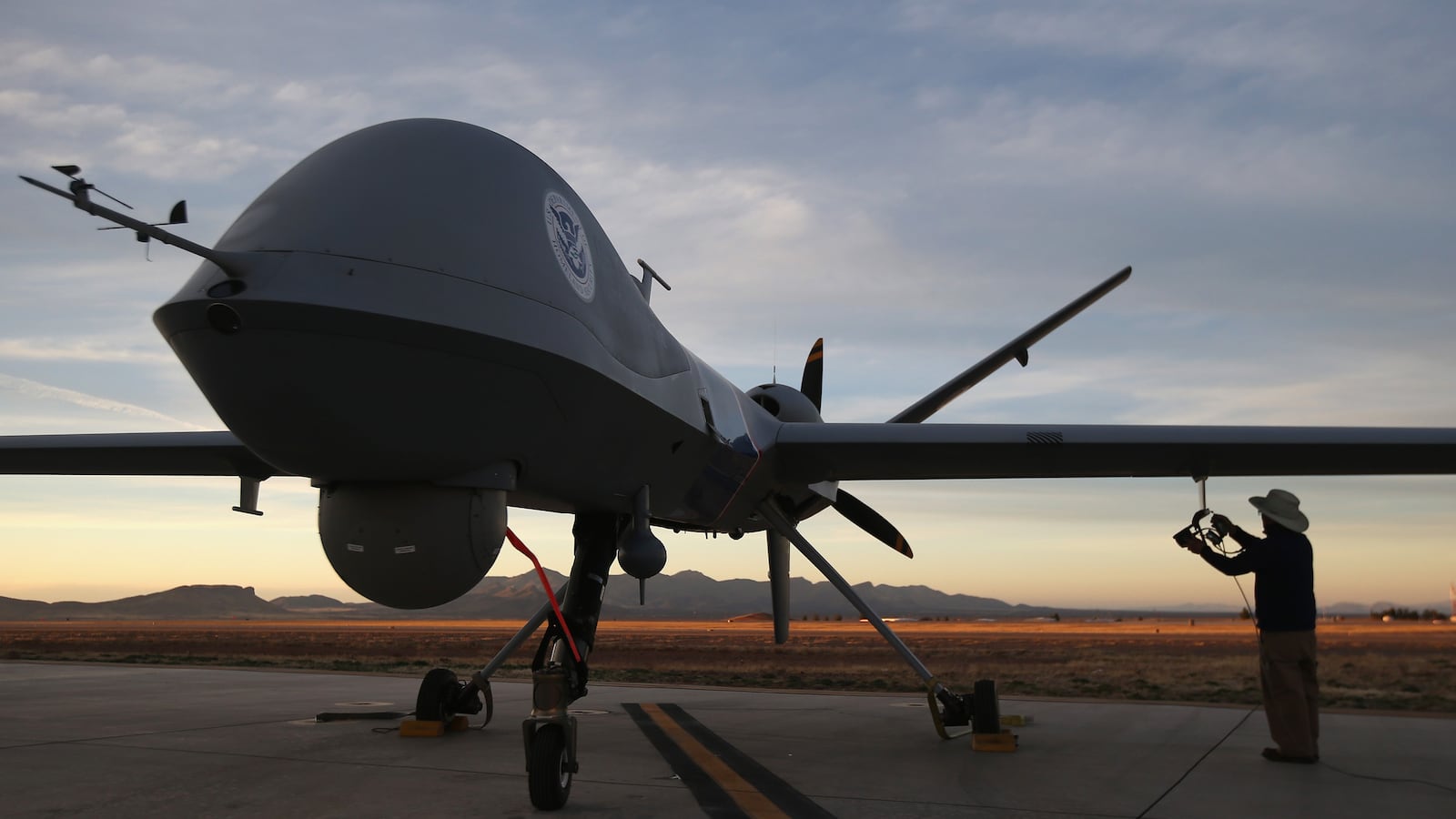One of the military’s newest weapons to come out of its Middle East wars is now a potential domestic threat. Drones—unmanned, remote-control aircraft that can span anywhere from a few inches to more than 100 feet— could soon be utilized by local law enforcement for surveillance purposes in the U.S. Now states are moving to limit or prohibit the technology.

Congress voted in early February to mandate that the Federal Aviation Administration let drones fly in the U.S. airspace by 2015. Concerned that the action will open the floodgates to unbridled use of the technology, states like Virginia are putting out a pre-emptive strike of their own.
“I think there’s a sense of urgency,” says Donald McEachin, a Democratic state senator in Virginia. “I think it’s important to get ahead on issues like these before they get out of control … We can imagine the problems that drones will bring in the future.”
McEachin helped introduce and pass a Virginia bill that, if signed by Governor Bob McDonnell, would place a moratorium on the use of drones in the state for two years. Prompted by fears that the technology could breach Fourth Amendment rights against unlawful search and seizure, the moratorium was the last option for Virginia legislators who couldn’t agree on a more-detailed bill. It’s the nation’s first drone-regulation legislation to be passed.
“We started out with another bill that had certain warrant requirements on it because I believe when the Founding Fathers wrote the Fourth Amendment, they never envisioned a low rider that could sit over your house and see things and hear things,” says McEachin. “Law enforcement is saying that if it’s in plain view we don’t need a warrant, so why should we change it?”
Many states are caught up in a tug-of-war between the will of law enforcement and concerned citizens and legislators.
Last month, the Seattle Police Department decided to terminate its drone program after citizens complained at a city-council meeting. The police department was one of the few agencies green-lighted to use drones by the FAA before 2015; it will be returning its equipment to the manufacturer.
Drones were in the spotlight this week when Sen. Rand Paul (R-Ky.) filibustered for 12 hours against the nomination of John Brennan for CIA director, in protest of the administration’s stance on the technology.
So far 30 states have introduced or partially signed legislation that places checks on the use of drone technology; in 23 of those states, officers must have probable cause in order to obtain a warrant for drone use.
Some of the proposed legislation specifically bans weaponization of drones for the apprehension of subjects. Those states are Georgia, Illinois, Massachusetts, Montana, New Hampshire, Oklahoma, and North Dakota.
“What states are trying to do for the most part is make sure that when you are using a drone for a search, you are subjected to the same limitations that an officer would have when showing up to a house to conduct a search,” says Allie Bohm, policy strategist with the American Civil Liberties Union.
Bohm said states, both red and blue, are rallying against the excessive use of drones due to a “visceral reaction” to the idea of something unseen watching you from above. She said the freedom to live life outside the confines of a “surveillance society” is a unifying American value.
“The idea should be that one can use drones to say, fight a forest fire or water the crops on one’s farm or conduct environmental surveying,” she says. “But as soon as you are going to take evidence collected by a drone and use that in court, there should be a check to make sure … that it wasn’t a fishing expedition.”
Yet most legislators and law enforcement are more lenient when it comes to using drones in emergency situations. In cases of search and rescue missions, kidnappings and environmental disasters like earthquakes and fires, many say the technology should be available to police—without a warrant.
Law-enforcement agencies say drones have gotten a bad reputation because of the images of war they evoke and that citizens overlook the benefits they can offer.
“They’re commonly associated, unfortunately, with the larger technology and large wingspan units used by the military overseas… we are using the small units that are no larger than a radio-controlled car,” says Capt. Angelo Nieves of the Orange County Sheriff’s Department in Florida.
Florida lawmakers are also trying to limit the use of drones, but Nieves calls the technology just another tool that officers can use to solve and prevent crimes.
In February, Capt. Michael Fewless, also of the OCSD, told a state community affairs panel that drones would help officers monitor large events like football games and parades for safety, but that the necessity of getting a warrant beforehand could limit any of the information gathered.
“If there was a problem and the drone is flying, and the crowd starts to scatter, any evidence that’s caught on that drone, on that camera, cannot be used as evidence,” Fewless told the committee. “So if we have somebody in there with the crowd scattering—their child gets grabbed by somebody else and they take off in a different direction—even though we now have the suspect on video, we cannot use the drone evidence under this current language. And we don’t want that.”
Nieves says the sheriff’s department will continue to work with lawmakers, but the main goal is to make the community safer.
“As new technology is introduced and becomes available to law enforcement, there is some concern as to how we would use it,” he says. “What we want is to just make sure that there’s a clear understanding of the intended use of the technology as it comes forward.”






